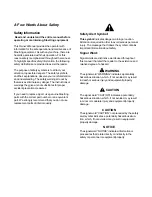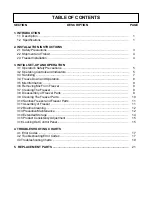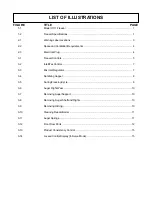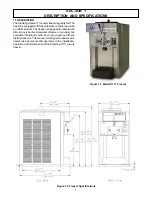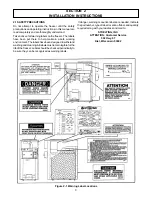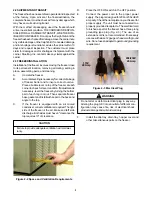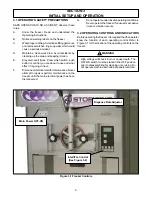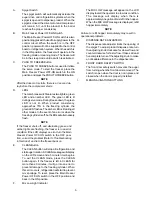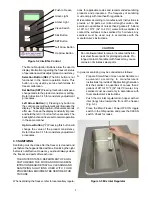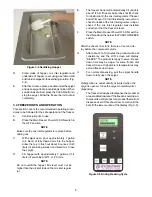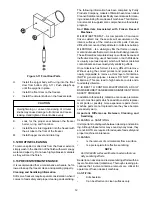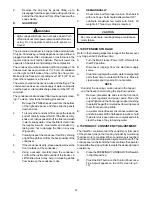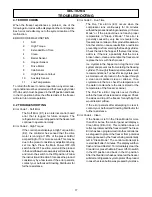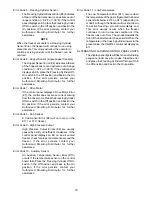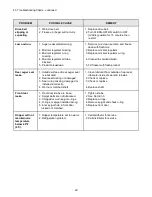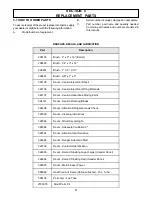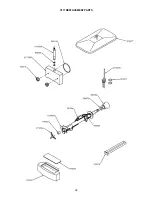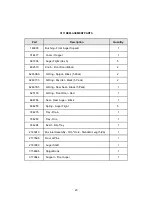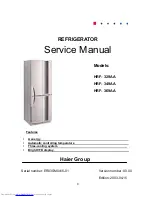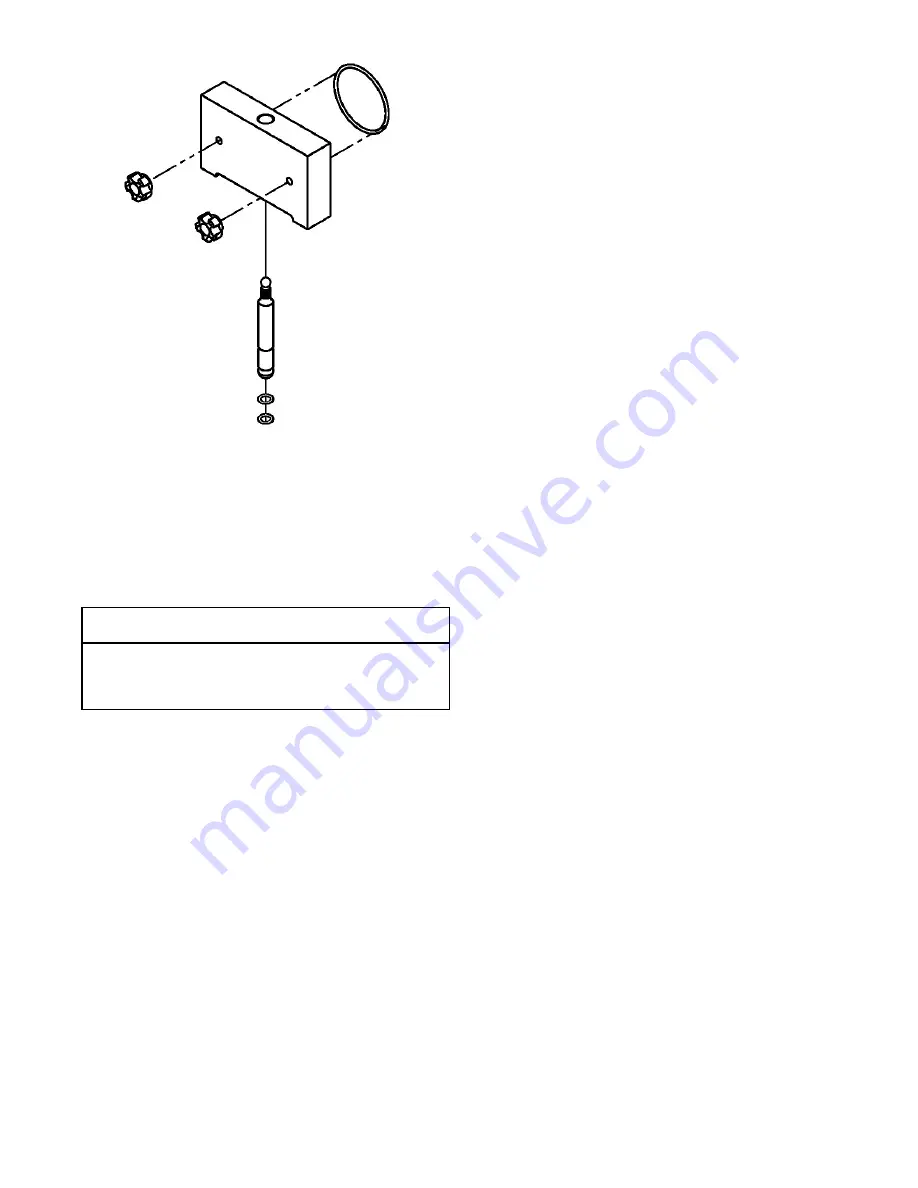
12
H.
Install the spigot body with o-ring into the front
door from bottom (Fig. 3-11). Push straight up
until the spigot is in place.
I.
Install the front door on the freezer.
J.
Install the circular knobs on the freezer studs.
CAUTION
Overtightening or uneven tensioning of circular
knobs may cause damage to front door and cause
leaking. Hand tighten circular knobs evenly.
K.
Look for the proper seal between the freezer
barrel, o-ring, and front door.
L.
Install the mix inlet regulator into the freezer with
the air tube to the front of the freezer.
M.
Install hopper cover and drain tray.
3.12 ROUTINE CLEANING
To remove spilled or dried mix from the freezer exterior,
simply wash in the direction of the finish with warm soapy
water and wipe dry. Do not use highly abrasive materials
as they will mar the finish.
3.13 PREVENTIVE MAINTENANCE
It is recommended that a maintenance schedule be fol-
lowed to keep the freezer clean and operating properly.
Cleaning and Sanitizing Information
Soft serve freezers require special consideration when it
comes to food safety and proper cleaning and sanitizing.
The following information has been compiled by Purdy
Products Company, makers of Stera-Sheen Green Label
Cleaner/Sanitizer and specifically covers issues for clean-
ing and sanitizing frozen dessert machines. This informa-
tion is meant to supplement a comprehensive food safety
program.
Soil Materials Associated with Frozen Dessert
Machines
MILKFAT/BUTTERFAT – As components of ice-cream/
frozen custard mix, these soils will accumulate on the
interior surfaces of the machine and its parts. Fats are
difficult to remove and help attribute to milkstone buildup.
MILKSTONE – Is a white/gray film that forms on equip-
ment and utensils that come in contact with dairy products.
These films will accumulate slowly on surfaces because of
ineffective cleaning, use of hard water, or both. Milkstone
is usually a porous deposit, which will harbor microbial
contaminants and eventually defy sanitizing efforts.
Once milkstone has formed, it is very difficult to remove.
Without using the correct product and procedure, it is
nearly impossible to remove a thick layer of milkstone.
(NOTE: general-purpose cleaners DO NOT remove
milkstone.) This can lead to high bacteria counts and a
food safety dilemma.
IT IS BEST TO CONTROL MILKSTONE ON A DAILY
BASIS BEFORE IT CAN BECOME A SIGNIFICANT FOOD
SAFETY PROBLEM.
In addition to food safety, milkstone can cause premature
wear to machine parts which can add to costs for replace-
ment parts or possibly more expensive repairs if worn
machine parts are not replaced once they have become
excessively worn.
Important Differences Between Cleaning and
Sanitizing
CLEANING vs. SANITIZING
It is important to distinguish between cleaning and sanitiz-
ing. Although these terms may sound synonymous, they
are not. BOTH are required for adequate food safety and
proper machine maintenance.
CLEANING
•
Is the removal of soil materials from a surface.
•
Is a prerequisite for effective sanitizing.
NOTE
An UNCLEAN surface will harbor bacteria that can
defy sanitizing efforts.
Bacteria can develop and resist sanitizing efforts within a
layer of soil material (milkstone). Thorough cleaning pro-
cedures that involve milkstone removal are critical for
operators of frozen dessert machines.
SANITIZING
•
Kills bacteria.
•
Can be effective on clean surfaces only.
Figure 3-11 Front Door Parts
Summary of Contents for O111
Page 1: ...O111 IntelliTec Models OWNER S MANUAL Manual No 513588 1 Sept 2006...
Page 2: ......
Page 22: ...16...
Page 28: ...22 O111 REPLACEMENT PARTS...
Page 30: ......

